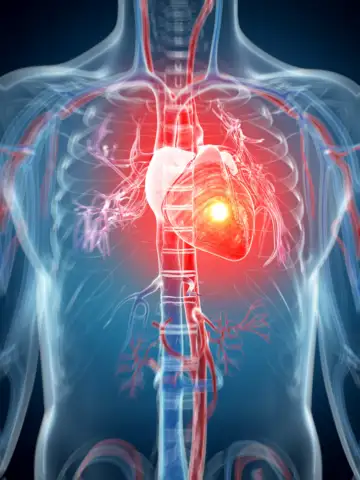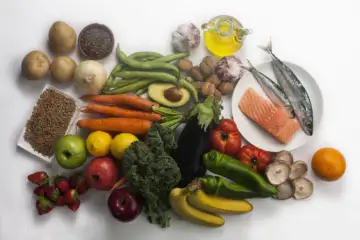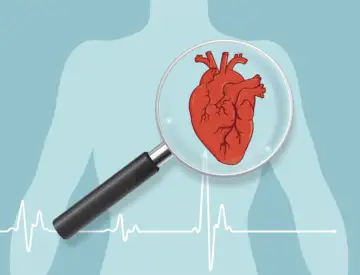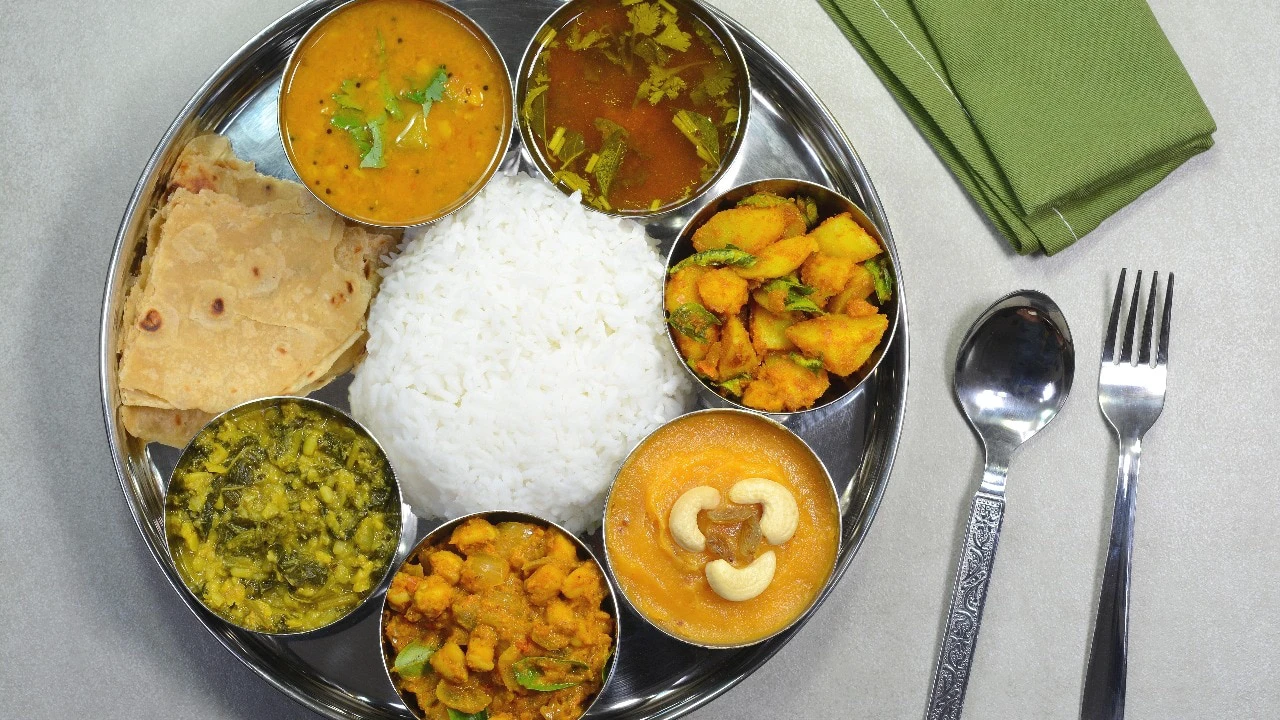Doctors and researchers are testing a new diet plan designed especially for Indians suffering from heart disease.
Inspired by the popular Mediterranean diet, this Indian-adapted version could be a way to offer simple, local, and effective strategies to protect the heart, especially at a time when India faces a high burden of cardiovascular diseases.
The Indian Adapted Mediterranean Diet (IAMD) is now in its third phase of testing through a clinical trial involving 140 patients at the All India Institute of Medical Science, New Delhi, and funded by the Indian Council of Medical Research (ICMR).
Developed by experts at AIIMS and The George Institute for Global Health, with help from researchers in the US, the diet uses Indian ingredients to recreate the health benefits of the original Mediterranean diet, known for its heart-protective and anti-inflammatory qualities.
The details of the IAMD have been published in the peer-reviewed journal BMC Nutrition.
WHY THIS DIET MATTERS
Coronary artery disease (CAD) is the most common type of heart disease and one of the leading causes of death in India. CAD happens when the arteries that supply blood to the heart become narrow or blocked due to plaque buildup (sticky, waxy substances made of cholesterol, fat, calcium, protein in the blood or even waste products from cells).
This can lead to chest pain, shortness of breath, and even heart attacks.
Many risk factors contribute to CAD like poor diet, lack of physical activity, obesity, and family history. Multiple studies show that changing the way we eat can lower the risk and help prevent future heart problems.
 Coronary artery disease (CAD) is the most common type of heart disease and one of the leading causes of death in India. (Photo: Getty Images)”The first phase was about the development of the diet,” Dr. Ambuj Roy, professor of cardiology at AIIMS Delhi, who is leading the trial, told IndiaToday.in. “We explored what the Mediterranean diet is and whether we could create equivalents within the food constraints here in India, while retaining its anti-inflammatory properties.”
Coronary artery disease (CAD) is the most common type of heart disease and one of the leading causes of death in India. (Photo: Getty Images)”The first phase was about the development of the diet,” Dr. Ambuj Roy, professor of cardiology at AIIMS Delhi, who is leading the trial, told IndiaToday.in. “We explored what the Mediterranean diet is and whether we could create equivalents within the food constraints here in India, while retaining its anti-inflammatory properties.”
ADAPTING THE MEDITERRANEAN DIET FOR INDIA
The traditional Mediterranean diet includes lots of fruits, vegetables, whole grains, legumes, nuts, olive oil, and herbs like rosemary and thyme. These foods are linked with lower rates of heart disease and better overall health.
But for Indian patients, eating olives and fava beans isn’t practical, or affordable. That’s why the researchers created a local version of the diet using ingredients easily found in Indian kitchens.
Instead of farro and bulgur, they used broken whole wheat and Basmati rice. Mustard and peanut oil replaced extra virgin olive oil. Herbs like tulsi (holy basil), ajwain (carom seeds), turmeric, and nutmeg were used in place of Mediterranean herbs.
Even vegetables were swapped thoughtfully. “We supplemented green leafy vegetables with Indian greens like bathua, chaulai, fenugreek, and radish leaves,” said Dr. Suparna Ghosh Jerath, a nutrition researcher at The George Institute and part of the IAMD team.
DESIGNING THE DIET PLANS
The team from The George Institute didn’t just stop at picking the ingredients. They built detailed seven-day diet plans that matched the calorie needs of different people. These included five calorie options: 1200, 1400, 1600, 1800, and 2000 kcal diets.
Each diet was split into six meals a day – three main meals and three smaller ones. Meals were built to balance nutrients, with 15% from proteins, 25-30% from fats, and 50-53% from carbohydrates.
 The traditional Mediterranean diet includes lots of fruits, vegetables, whole grains, legumes, nuts, olive oil, and herbs like rosemary and thyme. (Photo: Getty Images”We developed 7-day diet plans tailored to each individual’s calorie needs and gave them these meal plans. For now, we are experimenting with North Indian cuisine. As you know, food habits change every 100 kilometres in India. So, we do plan to extend this to other parts of the country-South Indian, Eastern, and Western cuisines,” Dr. Roy explained.
The traditional Mediterranean diet includes lots of fruits, vegetables, whole grains, legumes, nuts, olive oil, and herbs like rosemary and thyme. (Photo: Getty Images”We developed 7-day diet plans tailored to each individual’s calorie needs and gave them these meal plans. For now, we are experimenting with North Indian cuisine. As you know, food habits change every 100 kilometres in India. So, we do plan to extend this to other parts of the country-South Indian, Eastern, and Western cuisines,” Dr. Roy explained.
The researchers provided a detailed matrix representing recommendations for the Mediterranean Diet, the Indian counterparts, their availability and acceptability, and the adaptations based on the North Indian food environment. Except for quinoa, cannellini, and fava beans, the whole grains and legumes found in the MD were also present in North Indian cuisine.
Broken whole wheat and local rice varieties (Basmati) were substituted for bulgur and farro, respectively, and maize flour was added instead of polenta.
Extra virgin olive oil was partially replaced with the more culturally acceptable and available mustard and peanut oils. Some condiments and spices in the MD, like thyme, rosemary, and marjoram, were supplemented with other herbs and condiments used in Indian cuisine, such as Indian basil (tulsi), carom seeds (ajwain), turmeric (haldi), Nutmeg (jaiphal) and mace (javitri).
Similarly, the green leafy vegetable list was supplemented with Chenopodium Album (Bathua), amaranthus viridis (Chaulai), fenugreek leaves (methi), and radish leaves (mooli ke patte).
The team has already applied for grants to expand this work into other regions of India.
MEASURING INFLAMMATION WITH DII SCORES
The researchers also used a scientific tool called the Dietary Inflammatory Index (DII), pioneered by Dr. James Hebert of the University of South Carolina, to check how much inflammation each diet could cause or reduce.
Inflammation plays a big role in heart disease, and diets that reduce inflammation can help protect the heart.
 Inflammation plays a big role in heart disease, and diets that reduce inflammation can help protect the heart. (Photo: Getty Images)Most Indian diets studied in CAD patients had DII scores between -1.8 and 3.8, with a median score of 1.1, which is slightly pro-inflammatory. The adapted Mediterranean diet, however, scored between -7.8 and -8.4, which is strongly anti-inflammatory.
Inflammation plays a big role in heart disease, and diets that reduce inflammation can help protect the heart. (Photo: Getty Images)Most Indian diets studied in CAD patients had DII scores between -1.8 and 3.8, with a median score of 1.1, which is slightly pro-inflammatory. The adapted Mediterranean diet, however, scored between -7.8 and -8.4, which is strongly anti-inflammatory.
“We tried to make the recipes highly anti-inflammatory by including foods known for such properties,” said Dr. Jerath. “For example, if we prepare dal and add garlic tadka and spices, it becomes more anti-inflammatory because of the properties of these ingredients.”
MAKING THE DIET PRACTICAL AND AFFORDABLE
A common worry about healthy diets is affordability. Many believe that plant-based diets rich in nuts, seeds, and oils are too expensive for the average Indian household.
“When we talk about nuts and oils, there’s a perception that this kind of diet is for the rich. But we’ve tried to divide the portions and design recipes in a way that even people from humble backgrounds can follow,” Dr. Jerath said.
She added that it’s not just about copying the Mediterranean diet, but making it culturally relevant and accessible. “We didn’t just copy the Mediterranean diet. We looked at Indian equivalents like whole grains and pulses and built from there.”
FROM HOSPITALS TO HOMES
This study isn’t just about feeding hospital patients. The researchers hope to eventually promote these diets at a community level.
“We need to engage with community health workers and create an impact once we find that it’s effective,” said Dr. Jerath. “We focus on promoting traditional diets, especially in rural areas, things like consuming unpolished rice, whole grains, vegetables from kitchen gardens, and using natural farming methods.”
She added that people have moved away from home-cooked food and rely more on processed food from the market. This shift has contributed to poor health outcomes.
WHAT HAPPENS NEXT
Currently, the third phase of the trial is underway at AIIMS Delhi. So far, 115 patients have been recruited. The plan is to recruit a total of 140 patients, who will be followed for six months. While the study is not large enough to test for major heart health outcomes, it is designed to measure dietary changes, anti-inflammatory effects, and improvements in health markers.
Still underway, the results from this trial could help shape future dietary guidelines for patients with heart disease and encourage more widespread adoption of healthier eating habits rooted in traditional Indian foods.
As Dr. Roy summed it up, “It’s not just the ingredients that matter, but the quantity, portion, intensity, and lifestyle factors that come with it.”
